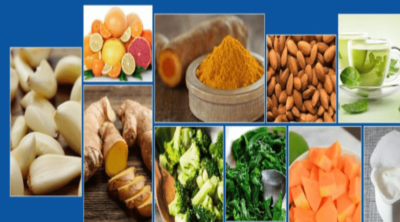
Food and Drug Administration (FDA) approved, potassium sorbate is a popular food preservative. This article gives you some DIY tips on how to use this substance.
One of the main selling points of potassium sorbate, which is commonly used as a food preservative, is its clearance from the Food and Drug Administration (FDA), and its ineffectiveness on the taste, or color of the food. When defined in chemical terms, this substance is the potassium salt of sorbic acid, which in itself, is a natural organic compound used as a food preservative. And it is obtained from a chemical reaction that neutralizes potassium hydroxide by sorbic acid. Foods require preservatives in order to increase their shell life, and potassium sorbate does this, without altering the nature of the food. Food products such as dairy products, baked food stuffs, beverages, cured fish and meats, vegetables and fruits, and confections, remain susceptible to mold and yeast growth, which prevent them from having a longer shelf life. So what potassium sorbate does is, it inhibits the growth of such microorganisms. Another common use of this preservative is in the wine making process. After the wine has undergone the fermentation process, it is most likely that some amount of active yeasts would still be present in the wine, and this yeast would be fully capable of multiplying and beginning a new yeast fermentation thus, changing the nature of the wine (usually, gives an unpleasant geranium smell). So before bottling the wine, potassium sorbate is added to keep the yeast from multiplying. It also finds application in preserving various kinds of dried fruits and dietary supplements which are herbal-based.
Using Potassium Sorbate
Potassium sorbate is available in the form of a fine, white free-flowing powder, when it is bought from the store. It may also be available in granular or pellet form. In order to use it as a preservative, it can be diluted with water. The resulting product would be a 25% potassium sorbate solution, which is typically used for preserving fruits and juices. This is how it goes:
# Get a cup of the powdered preservative, and about three cups of water. Mix the two ingredients. Stir continuously until the mixture is uniform.
# Store the mixture in a clean jar, and store it at room temperature.
# Now, all you have to do is, for a quart of the food to be preserved, use a teaspoon of the preservative you have prepared. Ensure that you stir the preservative well into the food.
For preservation of products other than fruits and fruit juices, the percentage of the preservative may vary.
| Items | % |
| Cheese and its products | 0.2 – 0.3 |
| Beverage (Syrups) | 0.1 |
| Margarine (Unsalted) | 0.1 |
| Wine | 0.02 – 0.04 |
| Dried Fruits | 0.02 – 0.05 |
| Vegetable Salads (prepared) | 0.02 – 0.1 |
| Cider | 0.05 – 0.1 |
| Confections | 0.05 – 0.1 |
| Pie fillings | 0.05 – 0.1 |
| Pet food (semi-moist) | 0.1 – 0.3 |
Uses of Potassium Sorbate
# In wine making, as mentioned, 0.02 – 0.04 % of potassium sorbate is mixed in the wine, before it gets bottled.
# For preserving food items such as cheese, 0.2 – 0.3 % of the product is sprayed on natural cheese, and for processed cheese, it is applied directly.
# Fish products are usual dipped in the solution of potassium sorbate, before getting smoked or dried.
# When it comes to preserving bakery products, the preservative is used in low dosages, as such products are leavening ones thus, require yeast. So even when potassium sorbate is used in lower amounts, it is enough for inhibiting mold, yeast and bacterial growth.
# When used in cured meats, potassium sorbate can avoid mold invasion for up to a month. Also, meats dipped in the preservative solution attain double shell life.
Most people use a combination of potassium sorbate, and sodium benzoate, to enhance the preservative effect on various foods.
